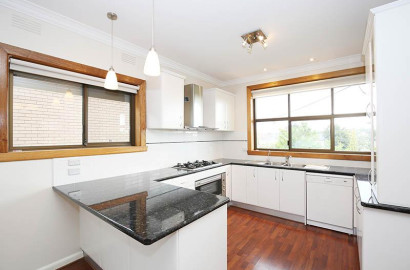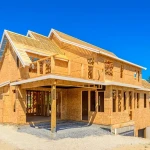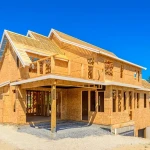- Building permits issued in March increased to 1,458,000 (SAAR). That’s 4.3% below the revised February rate and 1.5% higher than a year ago.
- Housing starts increased to 1,321,000 (SAAR) in March, down 14.7% from the revised February estimate and 4.3% lower than a year ago, according to the U.S. Census Bureau.
- Single-family housing starts increased to 1,022,000 (SAAR) in March, down 12.4% from February and 21.2% above last March. Single-family construction drove most of the increase in housing starts in the past year.
What happened: Despite falling more than expected in March, single-family housing starts remain 21.2% above last year’s pace. Multi-family construction also continued to slow, attributed to the already large number of apartment buildings under construction and easing apartment rent growth. Construction on buildings with 5 or more units decreased by 20.7% from March and 43.7% from the previous year.
Why this matters: The slowdown in single family housing starts reflects a more cautious outlook. Although builder sentiment about current sales remains generally positive, sales expectations for the next six months have fallen slightly. Single family starts fell in March in part to the large number of homes still under construction, but also perhaps because builders are beginning to anticipate that interest rates will likely remain elevated for much longer than previously thought.
Despite the headwinds, fewer builders are having to cut prices. Only 22% of builders are cutting their prices this month, down from 24% last month and 36% in December 2023 according to the National Association of Home Builders. Average price cuts at 6% remain stable, with fewer builders offering sales incentives suggesting resilient housing demand.
Demographic factors as well as rising inflation-adjusted incomes and wealth continue to support housing demand. At the same time, the stock of existing homes that is currently available for sale remains 36% below pre-pandemic levels and home values increased faster this month when compared to March 2023. The persistent housing shortage has supported growth in house prices.
Related posts:
Home shoppers are getting some slight relief as mortgage rates are now comfortably below the 7% mark.They could stay below that threshold if next week’s inflation data continues to move in the right direction. The latest data shows inflation is...
Existing homes sales fell by 5.4% in June to a seasonally adjusted annual rate (SAAR) of 3.89M and are now down 5.4% from June 2023, according to the National Association of Realtors (NAR). Total housing inventory at the end of...


 Mortgage Rates Eased Slightly This Week On Employment Data Revisions And Fed Minutes
Mortgage Rates Eased Slightly This Week On Employment Data Revisions And Fed Minutes
 July 2024 Housing Starts: Housing Starts Fall, Single Family Starts At Lowest Level Since April 2023
July 2024 Housing Starts: Housing Starts Fall, Single Family Starts At Lowest Level Since April 2023
 Singapore Overtakes Hong Kong In Terms Of Property Investment Prospects
Singapore Overtakes Hong Kong In Terms Of Property Investment Prospects
 May 2024: New Home Sales Fell Despite Easing Mortgage Rates in May
May 2024: New Home Sales Fell Despite Easing Mortgage Rates in May
 June 2024 Housing Starts: Housing Starts Rebound in June, Single-Family Construction Slows Less Than Expected
June 2024 Housing Starts: Housing Starts Rebound in June, Single-Family Construction Slows Less Than Expected